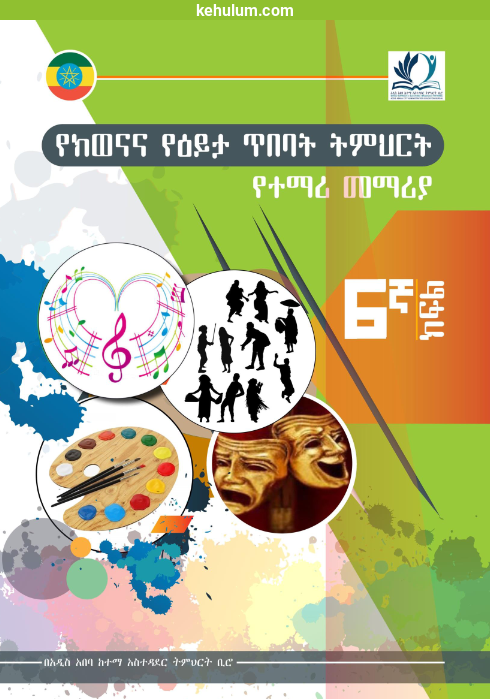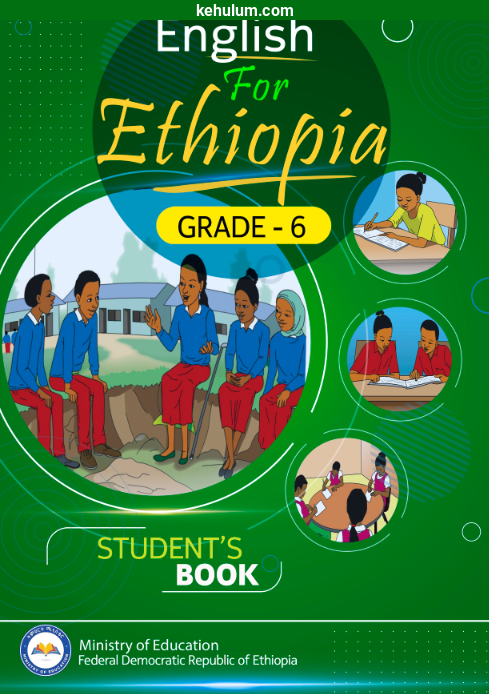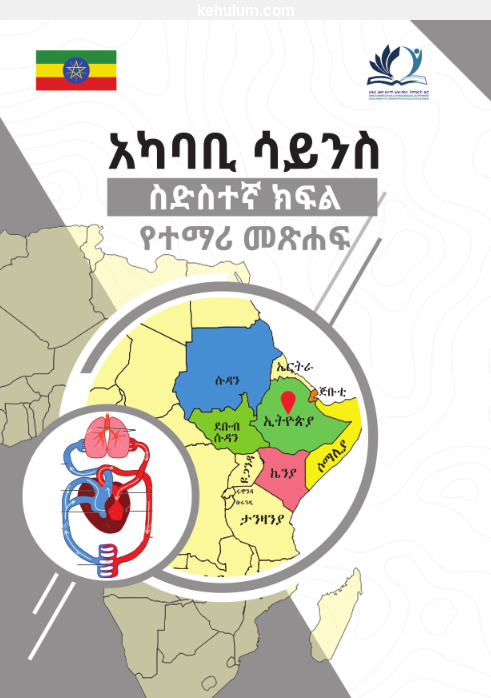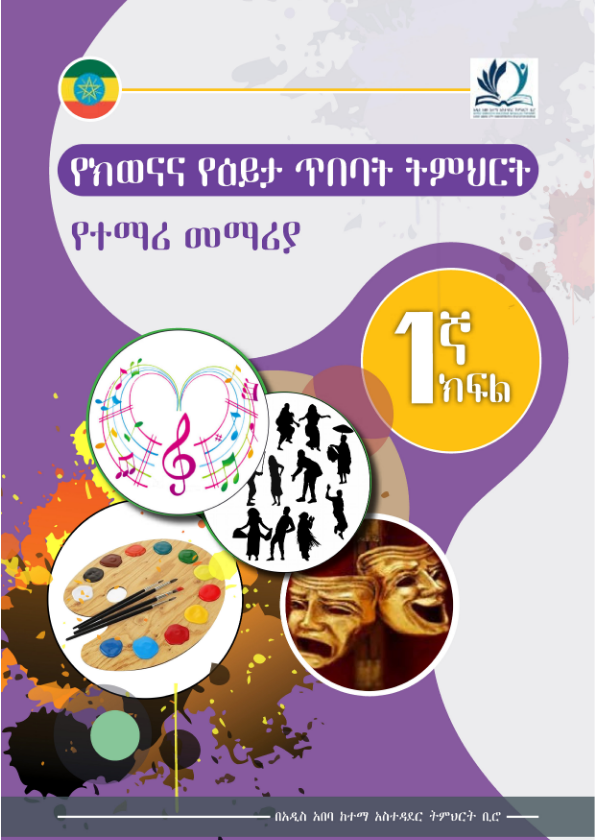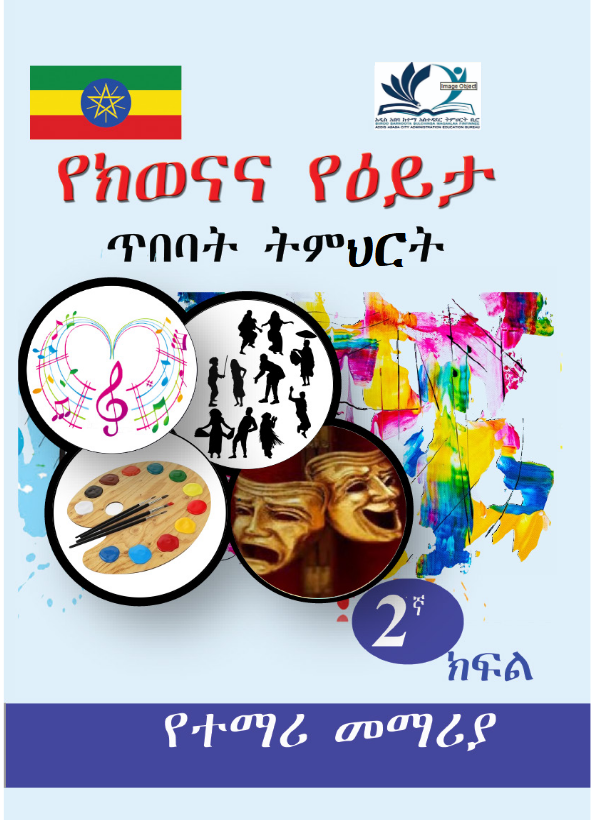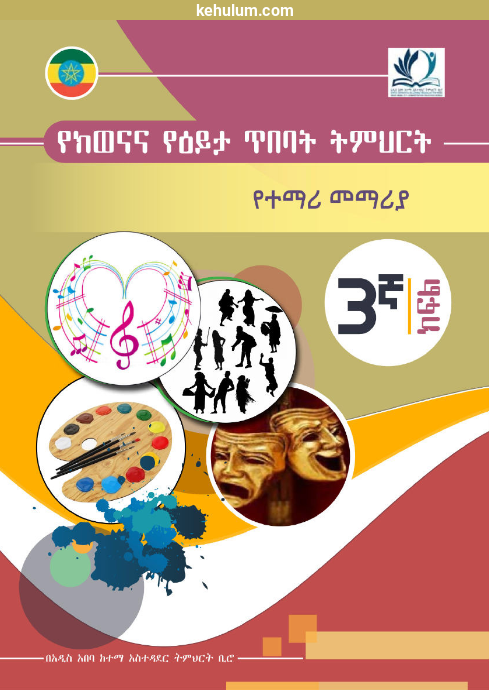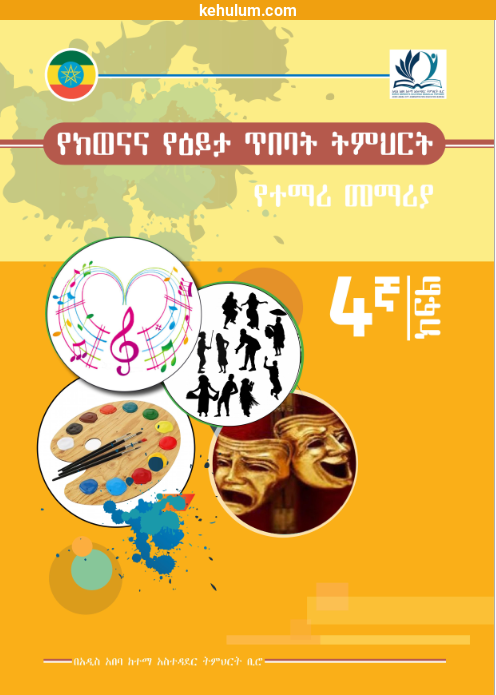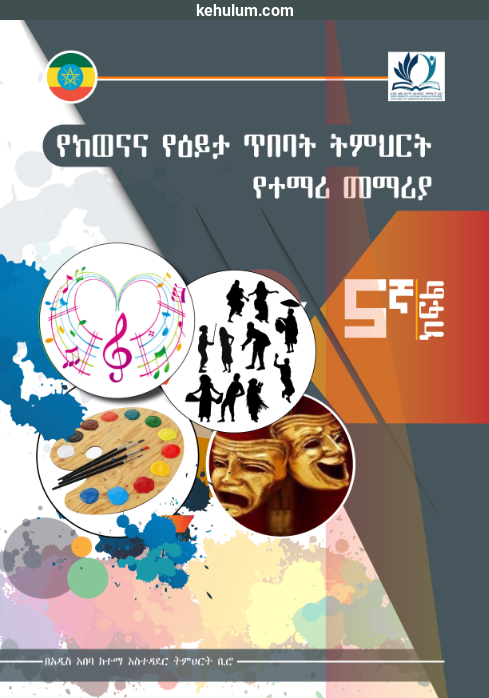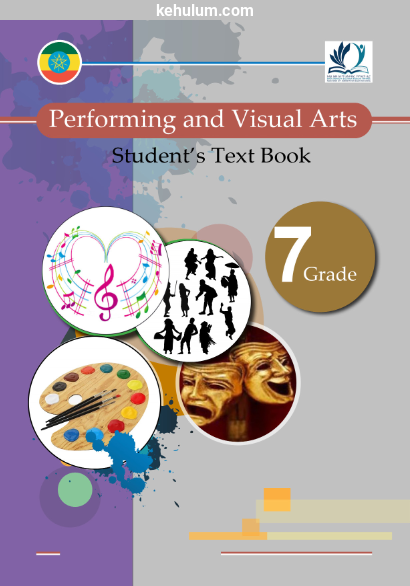The Grade 6 New Curriculum Performance and Visual Arts Education (PVA) textbook has five chapters, they are:
- ጥበባዊ ግንዛቤ / Artistic Understanding
- ፈጠራን መግለፅ / Defining Creativity
- ታሪካዊ እና ባህላዊ አውዶች / Historical and Cultural Contexts
- ሥነ-ውበታዊ እሴት (ዋጋ) / Aesthetic Value
- ጥመርታ ዝምድናና ትግበራ / Relationships and Application
Chapters overview
Chapter One – Artistic Understanding
This chapter introduces the core foundations of performing and visual arts. Students learn about major and minor musical scales, key signatures, rhythm, dance movements, basic theatre skills, and visual design. Through music practice, performance, and drawing activities, students begin to identify and understand the fundamental artistic elements that shape creative expression. Teachers guide classroom demonstrations in rhythm, melody, body movement, and color composition.
Chapter Two – Defining Creativity
In this chapter, students explore how to express creativity across different art forms. They practice counting musical beats, reading notes on treble and bass clefs, and understanding rhythm in dance. The chapter also introduces expressing ideas through theatre, photography, and video, as well as design concepts like light, distance, and shadow. It encourages students to experiment with original ideas and artistic problem-solving through practical projects.
Chapter Three – Historical and Cultural Contexts
This chapter examines how Ethiopian history and culture are reflected in art. Students study traditional musical instruments (string, wind, and percussion), folk dances, folk tales, and visual storytelling. They also explore how history is recorded through oral and visual arts. Teachers use this section to help students connect artistic practices to Ethiopia’s diverse cultural heritage and understand art’s role in preserving identity and tradition.
Chapter Four – Aesthetic Value
This chapter focuses on helping students appreciate the beauty and purpose of art. It covers how indigenous knowledge is represented in music, dance, drama, and visual art. Students examine melody, movement, traditional plays, and artistic values to understand why art matters in social and cultural life. Teachers guide students in comparing different art forms and discussing how art communicates emotion, beauty, and meaning.
Chapter Five – Relationships and Application
The final chapter connects art learning to real-life applications. Students learn how to link performing and visual arts with subjects like environmental education, health awareness, traffic safety, and gender equality. They engage in creative projects such as composing songs, designing posters, and performing plays that address community issues. Teachers use this unit to show how art can inspire positive social change and promote teamwork, responsibility, and environmental awareness.

